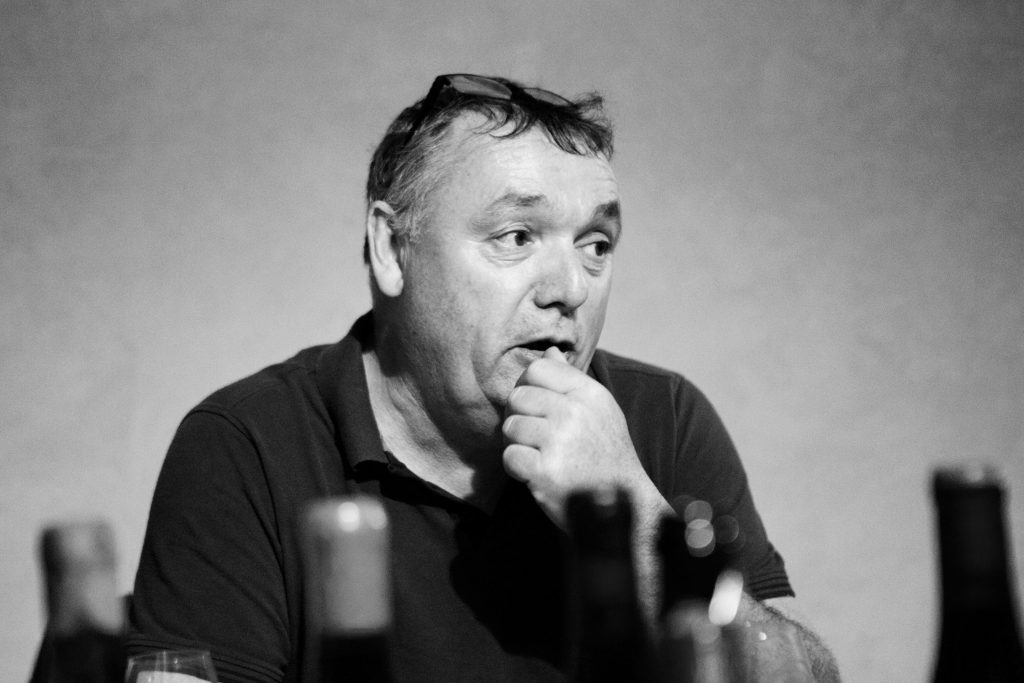
I jumped out of bed on our last morning in La Fabrique, having slept straight through my alarm, but I was packed and had inside of fifteen minutes. As we loaded the car, Pierre was nowhere in sight; he wouldn’t rise until later and I regretted not saying farewell the night before. As we said our goodbyes to Sonya, I gave her a big hug and said I couldn’t thank her enough. She replied that the best way to thank her was to come again. I said I most definitely would, even though it would probably be a while before I made my way back to France, and I thought the offer must have been a habit that didn’t yet take into account the imminence of their leaving that magical place behind.
In any event, maybe Sonya and Pierre would land at a smaller place that would surely be no less of an oasis with Sonya at the helm, and I could show my appreciation at the new location.
After we stopped for some much needed gas at what was essentially the French version of Costco, Ted grabbed a ticket from a toll booth and said, “I wonder how much this one’ll be.” The Mistral along the road was particularly strong, blowing the car from side to side and making the trees thrash erratically and somehow in opposite directions. I said the wind was protesting our departure from La Fabrique, and Ted agreed. He mused on the nature of the Mistral, how hot air from the south meets the cold air from the north and hits the mountains near Montélimar and creates this powerful downdraft, which may have answered my question about the seemingly impossible movement of the trees.
As we entered Châteauneuf-du-Pape on our way to Beaujolais, we passed a series of Shell gas stations and a McDonald’s, giving my sleepy head the momentary impression of being on an American road trip. Soon it became clear that another pit stop was needed for the two coffee drinkers in the car, much to Ted’s chagrin (he doesn’t touch the stuff unless he needs a lift after a lunch with wine), and he wondered aloud like a grumpy dad why we hadn’t taken care of business back at “Costco.” We stopped at a rest stop with a Starbucks and the dissolution of my sense that we were in France was complete.
We would be on the road for the next three hours, and there would be another three after our next stop. We had already done this a few times, and I was finally starting to feel it. If you think it looks easy to be an importer, it might be, if you don’t mind sitting in the car most of the day. But Ted’s heavy foot kept things going as fast as they could, mostly within legal limits.
There were signs that read “Le Ferme aux Crocodiles” every few miles, and without really thinking about it, I wondered if we were in a swamp and were supposed to keep our doors closed. These were clearly half-baked and road weary thoughts; there was little danger, what with us going eighty and not in Australia. I Googled it and they were actually advertising a crocodile farm that translates literally as “The Closure of the Crocodiles.” Yet another lapse in my French abilities, but I liked my version more.
Ted hit the brakes as he pointed at a little steal box on the side of the road. “Speed trap,” he said. “They don’t rely on cops with radars much. It’s mostly automated.” The boxes capture your speed and photograph your license plate if you’re over the limit. But unlike in the United States, where penalization for profit is the norm, there are signs that warn of these traps and give you time to slow down. Granted, in the states there are signs that read, “speed enforced by radar,” but there’s usually not someone actually there training a gun on the road. So drivers notice this pattern and become complacent, then are ambushed when they least expect it. I considered the consistency of these boxes a kind of courtesy that truly prevents speeding instead of one meant to dole out putative measures after the fact. Of course my view of this as French benevolence flies in the face of the reputation for quick incarceration by Parisian police for the smallest infractions. But out there in wine country, things (other than the tireless Ted) seemed to move a lot slower.
As we headed into the northern Rhone and passed through the commune of Valence, there was a mountain to our left that marked the end of the limestone and the start of the Massif Central, a region of mountains and plateaus where the stone turns to granite and schist. Whereas to the south, the bulk of the vines are Grenache with small portions of Syrah blended in, in the Northern Rhône Valley they use exclusively Syrah as their red grape. Not only is the Syrah a requirement, it seems to be best fit for these types of acidic soils. The landscape is marked by softer, rounder hilltops, and we passed one last limestone mountainside that had been quarried for building materials before the change was complete.
The next set of vineyards was Saint-Joseph, one of the better known appellations in the Rhône Valley. Traditionally it is placed below Côte-Rôtie, Hermitage and Cornas in the pecking order, but Ted thinks that’s a subjective preference and certain producer from Saint-Joseph can give the rest a run for their money. The hills in the Rhone are similar to those in Beaujolais where we were headed, but they’re steeper because they were carved that way by the Rhône River.
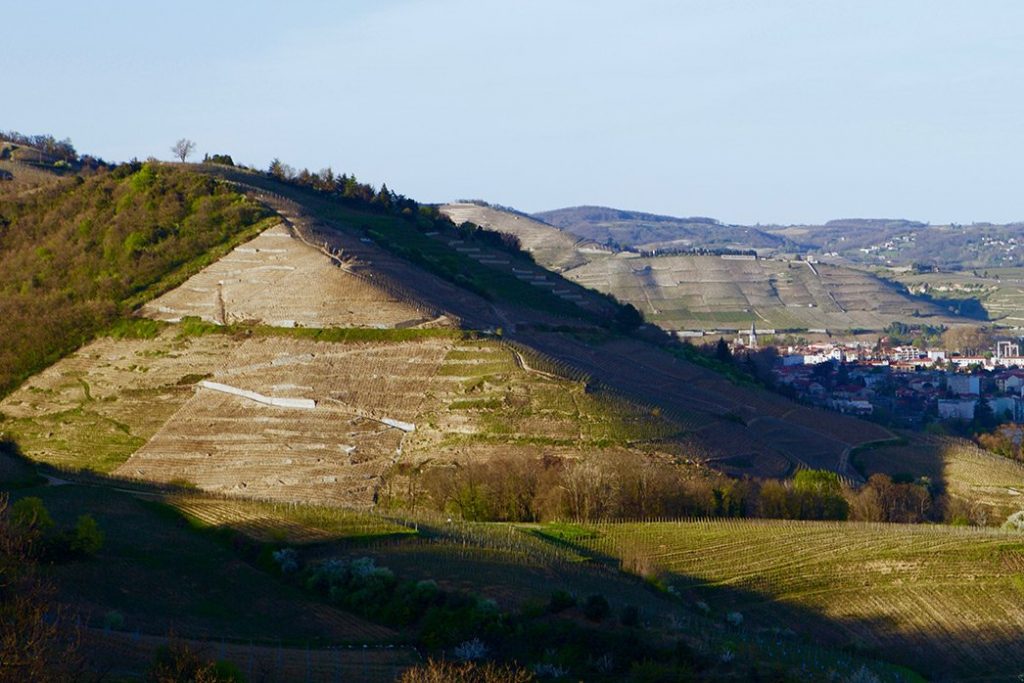
Next was Hermitage, where the majority of the land is owned by only four négociants: Jaboulet, Chapoutier, Delas and Cave de Tain. But the top producer in the area is the much smaller Jean-Louis Chave, run by a family that has owned and worked their land since 1481.
We were almost at our first destination of the day, where would have lunch at the house of Jean-Louis Dutraive, the Beaujolais producer that Ted considers one of the nicest guys he’s ever met, always generous of heart and hearth. Many times he has hosted lunches and dinners for Ted and his companions and even provided a place to stay. Ted remarked that “he’s a hub in Beaujolais who treats everyone with great respect, and unlike a lot of others, I’ve never heard him say anything negative about anyone.” He’s not just a producer whose product Ted imports, he’s become a very good friend.
“His 2012s were special,” Ted said. “Then I got to his 2013s, which were even better. But his 2014s were absolutely epic and now people think he walks on water; his talent and mastery of his terroirs is extraordinary.” Dutraive has passed his love and talent on to his three children, the oldest of whom is a woman, Ophélie, who studied enology at a few different universities.
Dutraive makes about six cuvées a year, but in 2016 he lost more than eighty percent of his entire crop to two huge hailstorms. The first one destroyed half that amount, and the second finished off the rest. Hail is so specific to some very small areas that the growers are realizing they need to diversify and buy and rent parcels elsewhere with a little distance from their domaine vineyards.
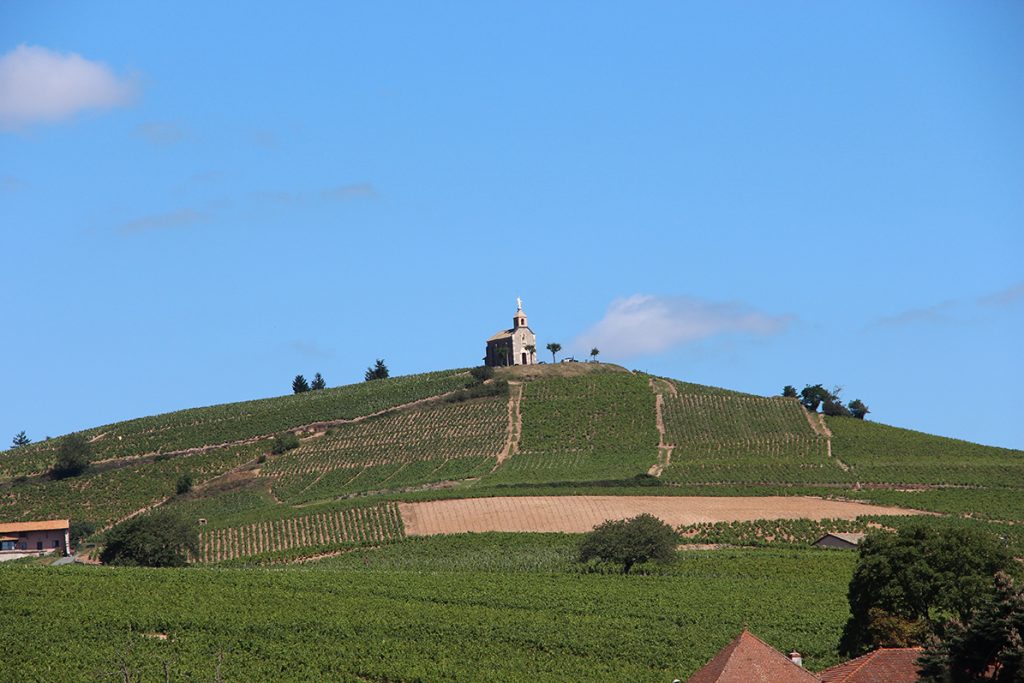
We entered Fleurie where we found Dutraive’s place, a simple little white ranch-style house on the top of a vineyard-covered plateau surrounded by walls on all sides, the Clos de la Grand’Cour. Dark gray shadows from quickly moving clouds rolled over a patchwork quilt of sparse greens and mostly browns below us; there’s very little life in most of the Beaujolais vineyards. Something like ninety-five percent of the area is chemically farmed, which kills everything but the vines, and ultimately kills the soil. At Chez Dutraive the vineyards are organically farmed and teeming with life above and below ground.
Jean-Louis came out and greeted us with his deep, thickly accented voice, gruff and warm at the same time. He has big rosy cheeks, leathery and weathered from decades under the sun, and he’s a stock tank of a guy. “As stout as a warrior from Lord of The Rings,” Ted said (again with his LOTR references). “And like me, he likes his meat,” he added.
Jean Louis’s home was cozy and cluttered, well lived-in in the way any farmhouse feels, with every surface and object having a practical purpose. We took a seat at a long table in his sunny dining room. I immediately noticed that it was constructed of old wine barrel slats, something he had custom-made with his retired barrels; I wanted one.
Ted and Jean-Louis chatted in French, laughing and patting backs. This was a social call; their business relationship is established well enough that it seems to maintain itself. There was some talk of Jean-Louis’s losses in 2016 and how he had to scramble to get fruit from other growers to produce at least a small batch of cuvées for the year. Still, Jean Louis kept up his jolly disposition, laughing his wide, open-mouthed, big-belly laugh.
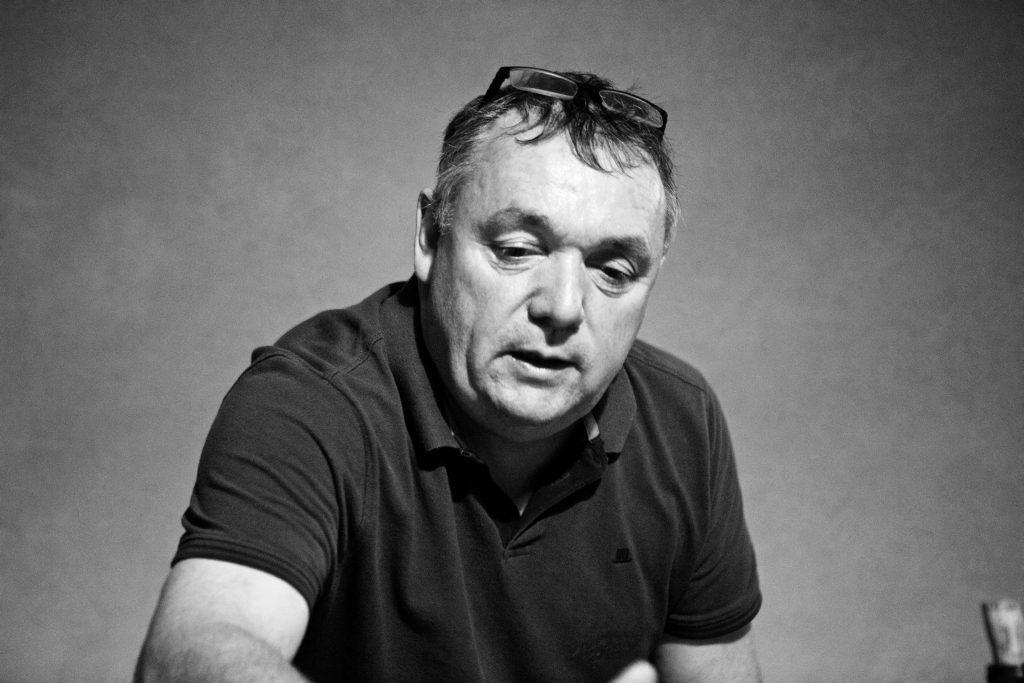
His sons Justin and Lucas joined us to say hello, then they disappeared and returned with salads of fresh, earthy lettuce, and fishcakes called brochet. They were mild and herbal, prepared with pike and brought to mind the brandade of Provence, without the saltiness. They were delicious, and since I hadn’t anticipated more courses (wasn’t I paying attention to where I was?), I ate way too many of them. There was a big boule of rustic light brown bread that I attacked with the same gusto. We sampled an incredible lineup of Dutraive’s wines and I was quickly as sated as can be.
Then his sons cleared our plates and to my surprise, returned with the plat principal of duck cassoulet. Duck is one of my favorites if done well, I think because I can’t get it at my regular grocery store. This confit took Ophélie three days to make and it was absolutely glorious. On top of that there was a huge platter of roast chicken, so I had to pack it all into an already full room.
Justin brought out all the wines he makes. At only twenty-three years old, he’s already making very good wine. Justin’s Beaujolais was light and extremely easy to drink, and his Beaujolais Villages was just as lovely.
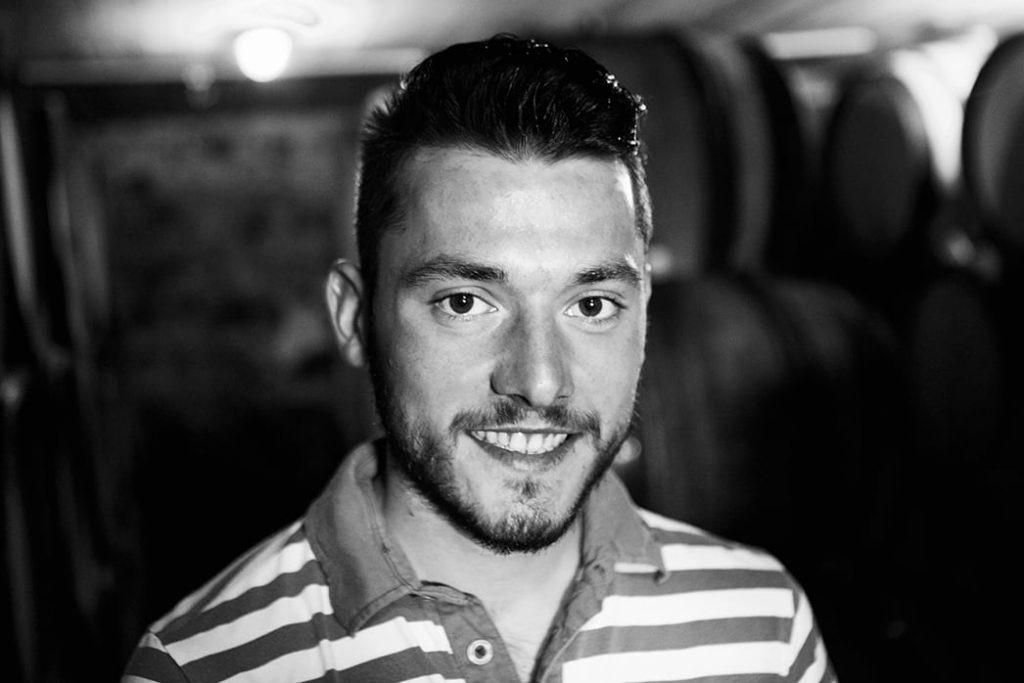
They chatted about a recent party in the village that happens every ten years to celebrate decade birthdays, for those who are twenty, thirty, forty years old, etc. It’s a huge get together of people far and wide. They joked about how all of the Champagne was served in the old-style Hellenic glasses with the wide mouths, so that by the end of the night everyone’s shoes were soaking wet. I laughed at all the sentences punctuated by “dack,” short for d’accord (agreed), and “poot,” short for putain (literally “whore,” but really the French way of saying “fuck”).
Ted mentioned that at the end of this trip, he and Andrea were going to Corsica, a place Jean-Louis holds dear—he was in the military back in the seventies and was stationed at a base there. He gestured at his head and said he wore the beret with the pompom and all. We all shot him looks of disbelief, which prompted him to disappear and return with a photo album. There he was in his uniform, wearing one of the funny French military hats of that time. He really did look like he was having fun and added that Corsica, with all of its beauty, was a hell of a place to serve.
He flipped through the album a little further and we saw his jovial spirit at play on a much younger face, making silly expressions, standing naked in someone’s living room with only a vinyl record covering his privates, laughing hard and drinking beer with his friends. He chuckled and joked, his mischievous and warm energy the same as ever. We left his place well-fed and buoyant. After hearing so many great things about him for so long, I was most definitely not disappointed with the real thing.

